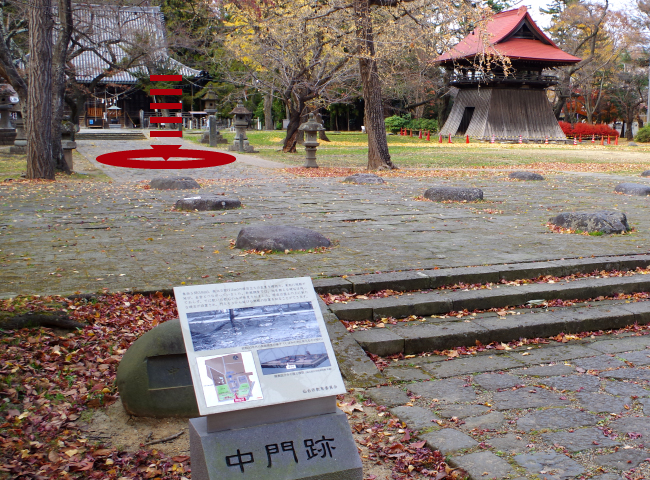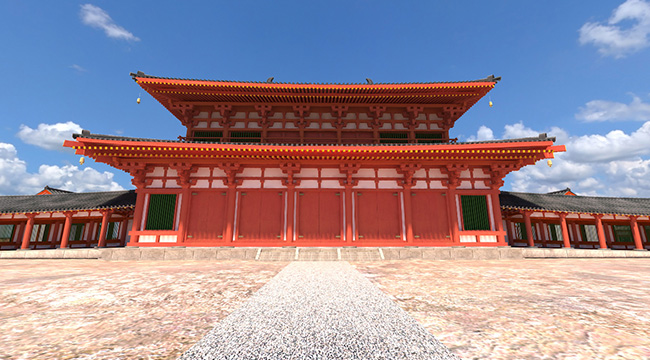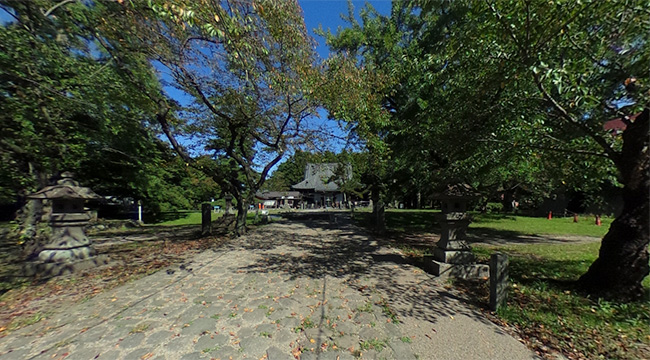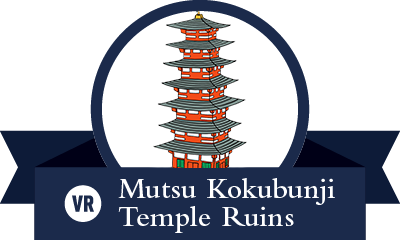Among all Kokubunji temples erected throughout the country under the imperial edict of Emperor Shomu in 741, this particular temple is the northernmost one currently known.
Based on the north-south central axis, the temple was constructed in the shichido garan-style (literally, seven-hall temple) with a nandaimon (main southern gate), chumon (central gate), kondo (main hall), kodo (lecture hall), sobo (priests’ living quarters), shoro (belfry), and to (pagoda).
From the red pigment adhering to the eave-end roof tiles dating back to the time of its founding, we can tell that the temple buildings of the time were magnificent, red-colored structures.
Caution
- Avoid using smartphones and/or tablets while walking, as it could be dangerous to yourself and others.
- Use VR only in safe areas and pay attention to your surroundings while using.
- Do not use VR in dangerous areas such as roadways.
- Please be careful around the Mutsu Kokubunji Temple ruins as some areas are under construction.
Mutsu Kokubunji Temple Ruins- feudal era VR
Go to the location of the VR experience spot!

Experience VR at each spot!
How to use
- This website requires your location information, so please make sure this is enabled.
- If the orientation is incorrect after the VR image is displayed, try reloading.

For users of Apple products including iPhone
For iOS 12.2–12.4.3
After updating to iOS 12.2, VR images may not be displayed properly in Safari. In that event, check Settings on the device as shown below.
- Go to Settings > Safari >Privacy & Security > Motion & Orientation Access.
- Make sure that Motion & Orientation Access is enabled.
For iOS 13 or higher
For iOS 13 or higher, a permission message requesting access to the sensor will be displayed. To view VR images in Safari, press Allow.
If you pressed Cancel, reload the page. If the permission message does not appear, close the tab and restart Safari.
Compare with a present-day panoramic photo!


